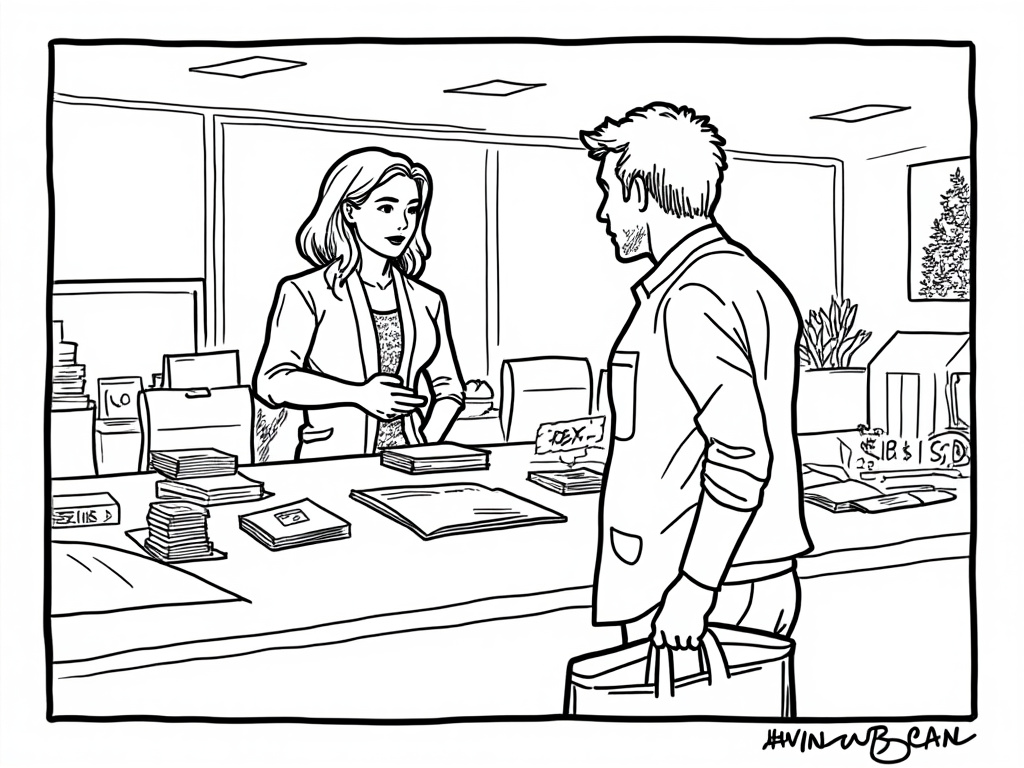
The UAE Dirham: A Complete Guide to the Emirates’ Currency
Reading time: 12 minutes
Table of Contents
- Introduction to the UAE Dirham
- Historical Journey of the Dirham
- Key Features and Security Elements
- Banknotes and Coin Denominations
- Exchange Rates and Currency Management
- Digital Transformation of the Dirham
- Practical Tips for Travelers and Businesses
- The Dirham’s Future in a Changing Financial Landscape
- Frequently Asked Questions
Introduction to the UAE Dirham
Ever found yourself puzzled by the colorful notes in your wallet after landing in Dubai? You’re holding the financial backbone of one of the world’s most dynamic economies—the UAE Dirham (AED).
The United Arab Emirates Dirham isn’t just currency; it’s a symbol of the nation’s remarkable journey from desert trading posts to global financial powerhouse. Let’s decode this currency that bridges traditional Arabic heritage with cutting-edge financial innovation.
Whether you’re planning a business venture in Abu Dhabi, shopping in Dubai’s legendary malls, or simply curious about global currencies, understanding the Dirham offers a window into the UAE’s economic philosophy and ambitious vision.
Historical Journey of the Dirham
The word “dirham” itself carries centuries of history, derived from the Greek “drachma” through ancient trade routes. But the modern UAE Dirham’s story begins much more recently, intertwined with the formation of the United Arab Emirates itself.
Pre-Federation Currency Landscape
Before 1973, the region that would become the UAE used a fascinating array of currencies. The predominant currency was the Gulf Rupee, issued by the Indian government specifically for circulation in the Persian Gulf region. Some emirates also used the Bahraini Dinar and Saudi Riyal for transactions.
This complex monetary situation reflected the region’s position at the crossroads of international trade, where Indian, British, and regional influences all converged in the marketplace.
Birth of a National Currency
The UAE Dirham was born on May 19, 1973, nearly 18 months after the federation’s formation. The newly established United Arab Emirates Currency Board introduced it at a rate of 1 Dirham = 0.186621 grams of gold, replacing the Qatar and Dubai Riyal at par.
This monetary unification represented more than just financial convenience—it was a powerful symbol of national identity for the young federation. As Sheikh Zayed bin Sultan Al Nahyan, the UAE’s founding father, noted during the currency launch: “A unified currency is not merely an economic tool, but a sovereign statement of our united vision.”
Evolution Through the Decades
The Dirham has evolved considerably over its 50-year history:
- 1970s: Initial introduction with basic security features and straightforward designs
- 1980s: Incorporation of more sophisticated anti-counterfeiting elements
- 1990s: Design updates reflecting the nation’s rapid development
- 2000s: Introduction of polymer notes and advanced security technologies
- 2010s: Enhanced designs celebrating Emirati culture and achievements
- 2020s: Integration with digital payment ecosystems and preparation for CBDC
Key Features and Security Elements
The UAE has invested heavily in creating currency that’s both culturally significant and technologically advanced. Let’s examine what makes the Dirham notes distinctive and secure.
Design Philosophy and Cultural Significance
UAE banknotes tell the nation’s story through carefully selected imagery. The front sides typically feature Arabic architectural landmarks that represent Emirati heritage, while reverse sides often showcase the nation’s modern achievements.
For example, the 500 Dirham note features the iconic Jumeirah Mosque on one side and the modern Central Bank building on the other—a visual representation of the UAE’s balance between tradition and progress.
Color schemes are intentional and consistent across generations of notes, helping citizens quickly identify denominations. The palette ranges from earthy browns for smaller denominations to vibrant blues and purples for higher-value notes.
Advanced Security Features
The Central Bank of the UAE employs multiple security features that make Dirham notes among the world’s most counterfeit-resistant currencies:
- Security Thread: A metallic thread embedded within the note that glows under ultraviolet light
- Watermarks: Visible when held against light, showing denomination values and falaj irrigation systems
- Microprinting: Tiny text visible only under magnification
- Color-Shifting Ink: Elements that change color when viewed from different angles
- Tactile Features: Raised printing that can be felt by touch, assisting visually impaired users
- Holographic Strips: On higher denominations, showing dynamic images when tilted
According to the Central Bank’s Security Department, “The current series incorporates over 15 distinct security features, many invisible to the naked eye but detectable by commercial authentication tools.”
Banknotes and Coin Denominations
The UAE currency system is designed for practical daily use while accommodating high-value transactions common in the nation’s luxury markets and business sectors.
Current Banknote Series
The UAE’s current banknote series includes six denominations, each with distinctive characteristics:
| Denomination | Primary Color | Main Imagery | Key Security Features | Typical Usage |
| 5 Dirhams | Brown | Traditional dhow (boat) | Watermark, security thread | Small purchases, tips |
| 10 Dirhams | Green | Al Fahidi Fort | Watermark, security thread, microtext | Taxi fares, coffee shops |
| 20 Dirhams | Blue-Green | Arab/Islamic architecture | Holographic strip, color-shifting ink | Casual dining, small shopping |
| 50 Dirhams | Purple | Al-Khazna Palace | Holographic elements, tactile features | Restaurant meals, fuel fill-ups |
| 100 Dirhams | Red-Pink | Al Jahili Fort | Advanced holographic thread, UV features | Grocery shopping, clothing |
| 1000 Dirhams | Blue | Qasr Al Hosn | Multiple holographic elements, microlenses | Luxury purchases, rent payments |
Commemorative and Special Issues
The UAE regularly issues commemorative currency to mark significant national milestones. In 2018, a special 100 Dirham note celebrated the “Year of Zayed,” honoring the centennial of founding father Sheikh Zayed bin Sultan Al Nahyan’s birth. In 2021, the country released a 50 Dirham polymer note to commemorate the 50th anniversary of the UAE’s formation.
These special editions become collectors’ items while reinforcing national narratives of progress and unity. As one currency collector from Abu Dhabi explained: “Each commemorative issue tells a chapter of our national story—they’re not just money, but miniature historical documents.”
Coins in Circulation
While electronic payments are increasingly dominant, coins remain important for small transactions across the Emirates:
- 25 fils: Smallest denomination commonly used
- 50 fils: Medium-sized coin with a smooth edge
- 1 Dirham: Largest coin in regular circulation
Technically, 1, 5, and 10 fils coins exist but are rarely seen in daily transactions, with most merchants rounding to the nearest 25 fils.
Exchange Rates and Currency Management
One of the most distinctive aspects of the UAE Dirham is its stability—a purposeful economic policy choice with far-reaching implications.
The Dollar Peg: Strategic Stability
Since 1997, the UAE Dirham has been pegged to the US dollar at a fixed rate of 3.6725 Dirhams per dollar. This isn’t just a technical monetary arrangement—it’s a fundamental economic strategy.
The dollar peg provides several key advantages:
- Reduces exchange rate risk for international investors
- Stabilizes import costs (crucial for a country that imports most consumer goods)
- Simplifies financial planning for businesses operating in the UAE
- Anchors inflation expectations
- Supports the UAE’s position as a regional trade and financial hub
Dr. Nasser Saidi, former Chief Economist at Dubai International Financial Centre, explains: “The dollar peg has been a cornerstone of the UAE’s economic stability strategy, providing predictability in a region often characterized by volatility.”
Case Study: The 2008 Financial Crisis Test
During the 2008 global financial crisis, speculation mounted that the UAE might abandon its dollar peg as the US dollar weakened and inflation in the Emirates rose to nearly 12%. However, the Central Bank maintained the peg, demonstrating commitment to long-term monetary stability over short-term adjustments.
This decision proved beneficial during Dubai’s subsequent debt challenges in 2009, as currency stability helped prevent a potential spiral of capital flight and further economic deterioration. Today, this episode is studied as a successful case of monetary policy steadfastness during crisis conditions.
Currency Management and Reserves
The Central Bank of the UAE (CBUAE) manages the Dirham with a substantial backing of foreign reserves. As of 2023, these reserves exceed $110 billion, providing robust support for the currency peg and overall monetary stability.
The CBUAE employs a conservative approach to currency management, maintaining reserve ratios well above international standards. This approach reflects the UAE’s broader economic philosophy of building resilience against regional volatility and oil price fluctuations.
Digital Transformation of the Dirham
While the physical Dirham has a rich history, its future is increasingly digital. The UAE is positioning itself at the forefront of currency innovation with several forward-looking initiatives.
The Digital Dirham Project
In 2023, the CBUAE launched an ambitious Central Bank Digital Currency (CBDC) initiative called the “Digital Dirham.” This project aims to create a state-backed digital version of the national currency that maintains all the trust and stability features of physical Dirhams while enabling more efficient, transparent, and programmable financial transactions.
The Digital Dirham isn’t merely following global trends—it’s part of a comprehensive strategy to position the UAE as a financial technology leader. As CBUAE Governor Khaled Mohamed Balama stated at the launch: “The Digital Dirham will be a bridge between traditional finance and the digital economy, reinforcing the UAE’s position as a competitive financial hub embracing technological innovation.”
Current Digital Payment Ecosystems
Even before the CBDC implementation, the Dirham has been increasingly circulating in digital form through several channels:
- Mobile Banking Apps: All major UAE banks offer sophisticated mobile applications for Dirham transactions
- Digital Wallets: Services like Apple Pay, Samsung Pay, and local options like Emirates Digital Wallet
- Peer-to-Peer Payment Systems: Platforms facilitating instant transfers between individuals
- Blockchain-Based Solutions: Experimental platforms exploring distributed ledger technology for Dirham transactions
The penetration of digital payments in the UAE is among the highest globally, with 83% of consumers using digital payment methods regularly according to a 2022 Mastercard survey—significantly above the global average of 64%.
Practical Tips for Travelers and Businesses
Whether you’re visiting the UAE or establishing commercial operations, understanding the practical aspects of handling Dirhams can save you time, money, and potential headaches.
Smart Exchange Strategies for Visitors
If you’re traveling to the UAE, consider these insider tips for the best currency experience:
- Avoid airport exchange counters: While convenient, these typically offer rates 3-5% less favorable than city centers
- Use exchange houses in shopping malls: Al Ansari Exchange, UAE Exchange, and Lulu Exchange often offer competitive rates with no commission
- Consider ATM withdrawals: Many travelers find that withdrawing Dirhams directly from ATMs offers convenience and reasonable rates (check your bank’s foreign transaction fees)
- Exchange larger amounts at once: Minimize the impact of fixed fees by changing money in fewer, larger transactions
- Keep exchange receipts: These may be required if you wish to convert unspent Dirhams back to your home currency
“I’ve found that exchange houses in older commercial districts like Deira in Dubai often offer slightly better rates than their mall counterparts,” shares Sarah Johnson, a business consultant who visits the UAE quarterly. “The difference might be small, but it adds up for frequent travelers.”
Business Considerations for the Dirham
For companies operating in or with the UAE, several currency-related factors deserve attention:
- Banking relationships: Establish accounts with banks that have strong international transfer capabilities
- Transaction documentation: Maintain detailed records of all Dirham transactions for regulatory compliance
- Hedging consideration: While the dollar peg reduces much currency risk, companies with significant costs in euros or other currencies may still benefit from hedging strategies
- Cash handling procedures: Despite digital advancement, cash remains important in many sectors—establish proper handling protocols
- VAT implications: Remember that the 5% Value Added Tax applies to most transactions and must be properly accounted for
UAE Dirham Acceptance Beyond Borders
Percentage of tourist areas and major businesses accepting UAE Dirhams without conversion (2023 data)
The Dirham’s Future in a Changing Financial Landscape
As global finance evolves, so too does the Dirham. Several key trends and developments will likely shape its future trajectory.
Balancing Tradition and Innovation
The UAE faces the challenge of maintaining its currency’s traditional strengths—stability, trustworthiness, and physical security—while embracing technological innovation. This balancing act is evident in several initiatives:
- The continued issuance of high-quality, culturally significant physical notes alongside digital alternatives
- Investment in both traditional anti-counterfeiting measures and cutting-edge blockchain security
- Preservation of the dollar peg while exploring new international financial arrangements
“The future of the Dirham reflects the UAE’s broader economic strategy,” notes financial analyst Mohammed Al-Hashimi. “It’s about selective modernization—adopting the best innovations while maintaining proven foundations of stability.”
Regional and Global Influence
The Dirham’s influence extends beyond the UAE’s borders. As the Arab world’s second-largest economy after Saudi Arabia, the UAE’s currency policies impact regional financial stability.
Looking ahead, several factors may expand the Dirham’s regional importance:
- Increasing use as a settlement currency for regional trade
- Growing acceptance in neighboring countries’ tourist and commercial areas
- Potential role in emerging regional payment systems
- Influence on other Gulf Cooperation Council (GCC) countries’ currency strategies
Case Study: The Durban Paper Factory
The UAE’s commitment to currency quality is exemplified by its investment in the Durban Paper Factory. Established through a partnership between the CBUAE and Oumolat Security Printing, this state-of-the-art facility can produce up to 1 billion banknotes annually using advanced security technology.
This investment demonstrates how seriously the UAE takes its physical currency, even as digital alternatives emerge. The facility not only ensures the Dirham’s continued security and quality but also positions the UAE to potentially print currency for other nations in the future—a subtle form of monetary influence.
Your Dirham Journey: Navigating the UAE’s Financial Ecosystem
Understanding the UAE Dirham isn’t just academic—it’s a practical necessity for anyone engaging with one of the world’s most dynamic economies. As we’ve explored, this currency represents far more than its face value; it embodies the Emirates’ remarkable balance of traditional values and futuristic vision.
Your Dirham Readiness Checklist
- ✓ Familiarize yourself with current banknote and coin designs
- ✓ Understand basic security features to identify genuine currency
- ✓ Research optimal exchange methods for your specific needs
- ✓ Consider how the dollar peg affects your financial activities
- ✓ Explore digital payment options that complement physical Dirhams
- ✓ Stay informed about the Digital Dirham development
Whether you’re planning a desert adventure, considering business opportunities, or simply expanding your financial knowledge, the Dirham’s story offers valuable insights into how a thoughtfully managed currency can support national development and international engagement.
As Sheikh Mohammed bin Rashid Al Maktoum, Vice President and Prime Minister of the UAE, once remarked: “We don’t just build for today or tomorrow, but for generations to come.” The same philosophy applies to the nation’s currency—a carefully crafted financial instrument designed to serve both immediate needs and long-term aspirations.
What role might the Dirham play in your next personal or professional chapter? And how might your engagement with this unique currency connect you to one of the 21st century’s most remarkable economic transformations?
Frequently Asked Questions
How stable is the UAE Dirham compared to other regional currencies?
The UAE Dirham stands out as one of the most stable currencies in the Middle East and North Africa region. Thanks to its fixed peg to the US dollar at 3.6725 AED since 1997, it has avoided the volatility experienced by neighboring countries with floating exchange rates. This stability is reinforced by the UAE’s substantial foreign exchange reserves (exceeding $110 billion) and prudent fiscal management. During regional political upheavals over the past two decades, the Dirham has maintained its value and credibility, making it a preferred store of value even for citizens of neighboring countries experiencing currency instability.
Can I use US dollars instead of Dirhams in the UAE?
While the US dollar is occasionally accepted at major tourist attractions, international hotels, and some high-end retailers in Dubai and Abu Dhabi, it’s not practical to rely exclusively on dollars during your UAE visit. Government services, local restaurants, transportation, and most regular businesses operate solely in Dirhams. When dollars are accepted, the exchange rate applied is typically unfavorable, often 3.80 AED per dollar instead of the official 3.6725 rate. For the best experience and value, convert to Dirhams soon after arrival, especially if venturing beyond primary tourist areas or visiting smaller emirates where dollar acceptance is even more limited.
How is the UAE preparing its currency for digital transformation?
The UAE is pursuing a multi-faceted approach to currency digitization. Beyond the high-profile Central Bank Digital Currency (CBDC) project launched in 2023, the country is creating a comprehensive digital financial ecosystem. This includes regulatory frameworks for cryptocurrencies through the Virtual Assets Regulatory Authority (VARA), integration of blockchain technology for government services, and partnerships with major financial technology providers. Unlike some countries that view digital and traditional currency as competing alternatives, the UAE is developing a hybrid model where physical Dirhams, the Digital Dirham CBDC, regulated cryptocurrencies, and electronic payments coexist within a unified regulatory framework. This approach aims to position the UAE as both a traditional financial center and a hub for financial innovation.





